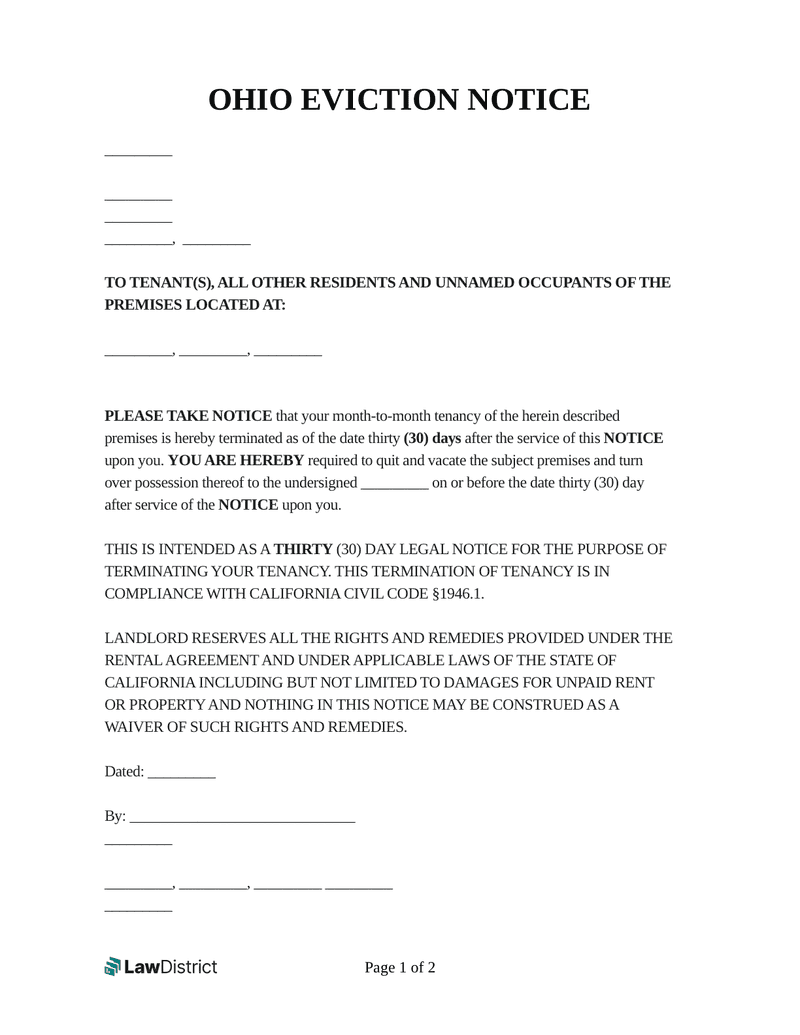There are many different types of eviction notices used in Ohio. Each provides a different reason and duration of notice for the removal of the tenant.
In Ohio state law, it is essential to provide the tenant with a legally valid reason to evict and the minimum amount of notice for the corresponding cause. This must be done before filing a complaint in court.
Failure to complete this legal document correctly or provide the right kind of notice could delay or even halt the eviction process. To avoid this, use one of the following notice types below that best matches your reasons for the eviction.
3-Day Notice to Quit (Non-Payment)
If the tenant does not pay rent on time the landlord may issue them with a 3-Day Notice to Quit. This allows the resident to either pay the rent that is owed or to vacate the premises within 72 hours from the notice.
3-Day Notice to Quit (Non-Compliant)
A non-compliance Notice to Quit can be used for any other violations of the lease which are not remedied with a pay rent or quit letter. In this case, the tenant will have 3-days to fix the issue recorded on the eviction notice or to leave the property.
30-Day Notice to Quit (Health or Safety Violation)
In Ohio, landlords may give tenants a 30-Day Notice to Quit if they violate any codes related to health or safety. This allows the resident to correct the problem within 1 month or to leave the property without facing legal action.
30-Day Notice to Quit (Month-to-Month Tenancy)
If a landlord wishes to end an ongoing month-to-month tenancy they can do so with a 30-Day Notice to Quit. This is an unconditional notification that informs the tenant that the lease is to be terminated and that they should leave by the end of the notice period.
